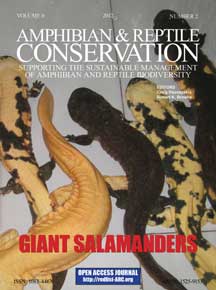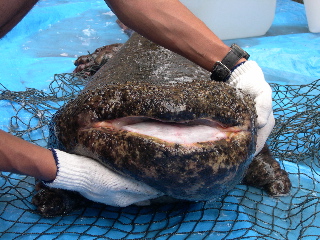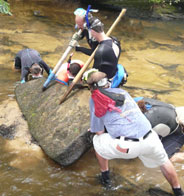|
VOLUME 5 (4) GIANT
SALAMANDERS
INTERNATIONAL CHAPTER - AMPHIBIAN
AND REPTILE CONSERVATION
NOTIFICATION:
This
website and its
affiliates are the official Internet website
portals for the Amphibian and Reptile
Conservation journal and our global conservation
network.
We own all copyright, exclusive of
authors copyright, produced by any proxy fraudulently presenting as Amphibian and
Reptile Conservation including the fraudulent Amphibian & Reptile Conservation
journal www.amphibian-reptile-conservation.org as published by the "Amphibian and Reptile Conservation
organisation" as an unspecified group led by Craig Hassipakis. Craig Hassipakis has
a long and dismal history of fraudulent activities, including recently committing
perjury in an attack on our global conservation network, as we document
see Internet Fraud
The Cryptobranchidae, the Chinese giant
salamander (Andrias davidinaus), Japanese giant
salamander (Andrias japonicus), and North
American giant salamander (Hellbender, Cryptobranchus
alleganiensis). Their iconic status, and especially those of the Chinese giant
salamander with a length of 1.8 meters, and biopolitical significance has resulted in major
and expanding initiatives, for their sustainable management. Knowledge of a wide range of
scientific, in concert with cultural, political, and economic factors all contribute to
cryptobranchid conservation biology and the formulation of optimal strategies for their
sustainable management. These involve reliable and accurate survey methods, phylogeny and
genetics, biogeography, ecology, reproduction, methods for research such as cell cultures,
and surveys to determine population status.
The Chinese giant salamander is currently the
most threatened cryptobranchid due mainly to over-harvest during the second half of the 20th
century and habitat loss. The Japanese giant salamander appears to be slowly declining due to
habitat modification. The North American giant salamander has large declines in the western
sub-populations and increasing declines in most of its eastern populations, many due to low
recruitment from unknown causes.
Here we present a series of reviews covering the
survey methods; palaeontology, phylogeny, genetics, and morphology; Biogeography, ecology and
reproduction; and the sustainable management of the Chinese giant salamander, Japanese giant
salamander , and North American giant salamander, and a range of other articles including a
lost highland population and the pioneering achievement of first cell culture of the
Chinese giant salamander or any giant salamander.
For notification
of the publication of our articles in press "The giant salamanders (Cryptobranchidae): Part C-1. Sustainable management –
cultural context, populations and threats." and "The giant salamanders (Cryptobranchidae): Part
C-1. Sustainable management – cultural context, populations and threats." please join our
members list at MEMBERSHIP
Keywords: Chinese giant
salamander, Japanaese giant salamander, North American giant
salamander, Andrias davidianus, Andrias
japonicus, Cryptobranchus
alleganiensis, Hellbender, Snot otter, genetics, survey techniques, palaeontology, phylogeny, genetics, morphology,
biogeography, ecology, reproduction, cell culture, Qinghai
Provence, Peoples Republic of China, North America, Japan, United States of
America.
Summary: The fully aquatic
Cryptobranchids are the world’s largest amphibians and the three described species, the
Chinese giant salamander, Japanese giant salamander, and North American giant salamander
(Hellbender), range from threatened to critically endangered. Cryptobranchids present
particular survey challenges because of their large demographic variation in body size
from 3 cm larvae to 1.5 m adults, and the wide variation in their habitats and
microhabitats. We review and compare the types and applications of survey techniques for
Cryptobranchids and other aquatic Caudata from a
conservation and animal welfare perspective.
|
The giant salamanders (Cryptobranchidae):
Part A. palaeontology, phylogeny, genetics, and morphology. 2012.
Robert K.
Browne, Hong
Li, Zhenghuan
Wang, Paul M.
Hime, Amy
McMillan, Minyao
Wu, Raul
Diaz, Zhang
Hongxing, Dale McGinnity, Jeffrey T.
Briggler. Amphibian and Reptile
Conservation 5(4): 17-29.
Low resolution PDF 1.2
MB
High res. PDF 2.5
MB
|
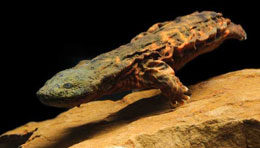 |
|
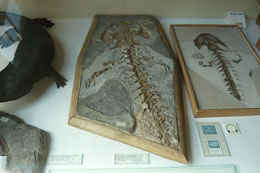 |
Summary: The Chinese giant
salamander, Japanese giant salamander, and North American giant salamander (Hellbender), are the
largest surviving amphibians and comprise two extant genera, Andrias and Cryptobranchus. Because
of their iconic status as the world’s largest amphibians and their biopolitical significance,
all cryptobranchids are subject to major and expanding initiatives for their sustainable
management. Knowledge of a wide range of scientific, in concert with cultural, political, and
economic factors all contribute to cryptobranchid conservation biology and the formulation of
optimal strategies for their sustainable management. However, there has previously been no
comparative review of the numerous scientific fields contributing to the knowledge of
cryptobranchids, and little peer-reviewed material on the Chinese giant salamander or the
Japanese giant salamander has been published in English. Here we present the first article
in a review series about , the Chinese giant salamander, Japanese giant salamander, and North
American giant salamander.
|
The giant salamanders (Cryptobranchidae):
Part B. Biogeography, ecology and reproduction. 2013. Robert K. Browne,
Hong Li, Zhenghuan Wang,
Sumio Okada,
Paul M. Hime,
Amy McMillan,
Minyao Wu,
Raul Diaz,
Zhang
Hongxing, Dale McGinnity, Jeffrey T.
Briggler. Amphibian and Reptile
Conservation 5(4): 30-50.
Low resolution PDF 1.8
MB
High res. PDF 5.5
MB
|
|
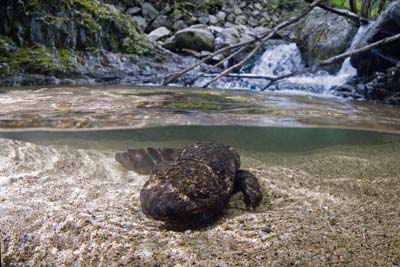
The massive size
of Andrias species
is illustrated in this photograph of a Japanese giant salamander
(Andrias
japonicus). Image by Michael
Ready.http://michaelready.photoshelter.com
.
|
Summary: The Chinese giant
salamander (Andrias davidianus) and the Japanese
(A. japonicus) giant salamander far exceed any
other living amphibians in size, with the North American giant salamander (Cryptobranchus alleganiensis) also being one of the world’s largest
amphibians. The Chinese giant salamander, Japanese giant salamander, and North American giant
salamander, are biologically similar in many ways including extreme longevity, a highly
conserved morphology, low metabolism, males brooding eggs, and large larvae. However, there are
differences in cryptobranchids' habitat and diet, reproductive behavior and seasonality,
fecundity, egg size, mating strategies and paternity. In “The giant salamanders
(Cryptobranchidae): Part B", we review cryptobranchid range and distribution, demography and
growth, population density and size, habitat, territoriality and migration, diet, predators, and
reproduction.
|
In
vitro culture of skin cells from
biopsies from the Critically Endangered Chinese giant
salamander, Andrias
davidianus (Blanchard, 1871)
(Amphibia, Caudata, Cryptobranchidae).
2013. Sarah
StrauÃ, Thomas
Ziegler, Christina
Allmeling, Kerstin
Reimers, Natalie
Frank-Klein, Robert
Seuntjens, Peter M.
Vogt. Amphibian and Reptile
Conservation 5(4):51–63.
Low resolution PDF 3.2 MB
High res. PDF 4.0 MB
|
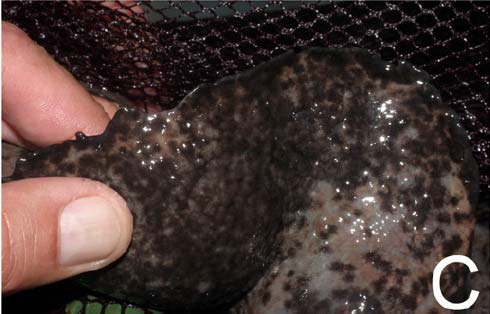 |
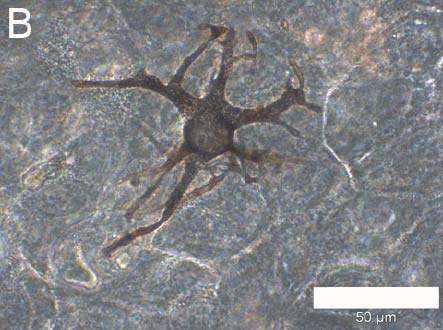 |
Left - regeneration
of Chinese giant
salalamander tail after clipping, and right, a melanophore in cell
culture.
Summary: We established a primary skin cell
culture of the Critically Endangered Chinese giant salamander, Andrias davidianus, from small biopsies using minimally invasive
methodologies. Biopsies were taken from three animals simultaneously with assessment of two
biopsy sampling techniques using samples from the tail tip. Cell culture was performed in a wet
chamber at room temperature. Several culture media and supplementations were tested as well as
culture containers and surface coatings. The handling of Chinese
giant salamanders in a landing net without
transfer out of the tank allowed easier biopsy withdrawal. Best outgrowth of cells from explants
was achieved in 60% DMEM/F12 medium with supplementation. Cells started to grow out as monolayer
within the first 12 hours, and after three weeks formed pigmented multilayers, then died after
10 weeks. Primary cultures of Chinese giant salamander
skin cells, as well as other amphibian primary cell cultures, can be used in future studies to
evaluate effects of disease, pollution, regeneration, wound healing, and also could provide
cells for use in reproduction technologies such as cryopreservation to preserve gene lines in
this and other Critically Endangered amphibians with minimal
harm.
|


